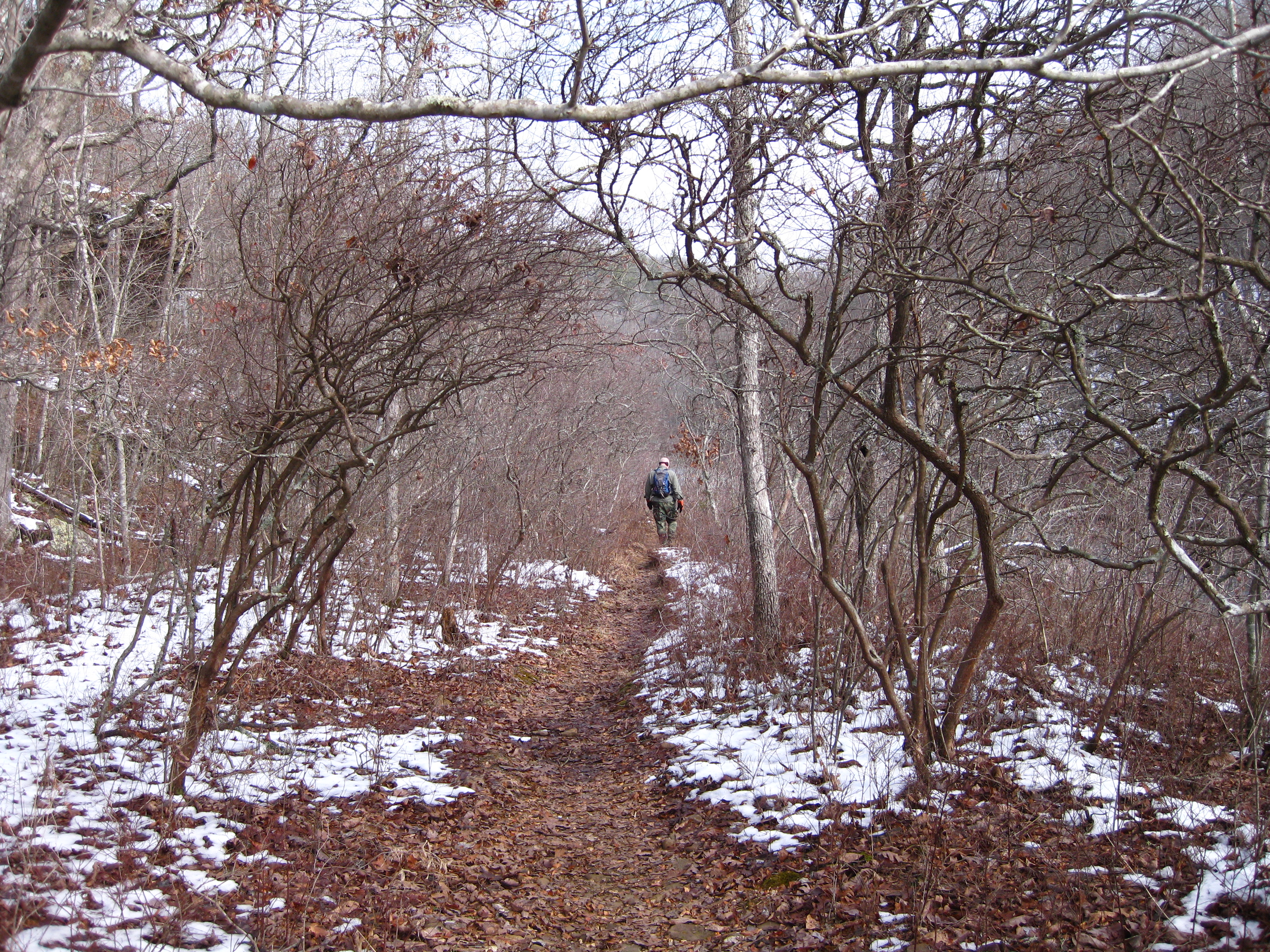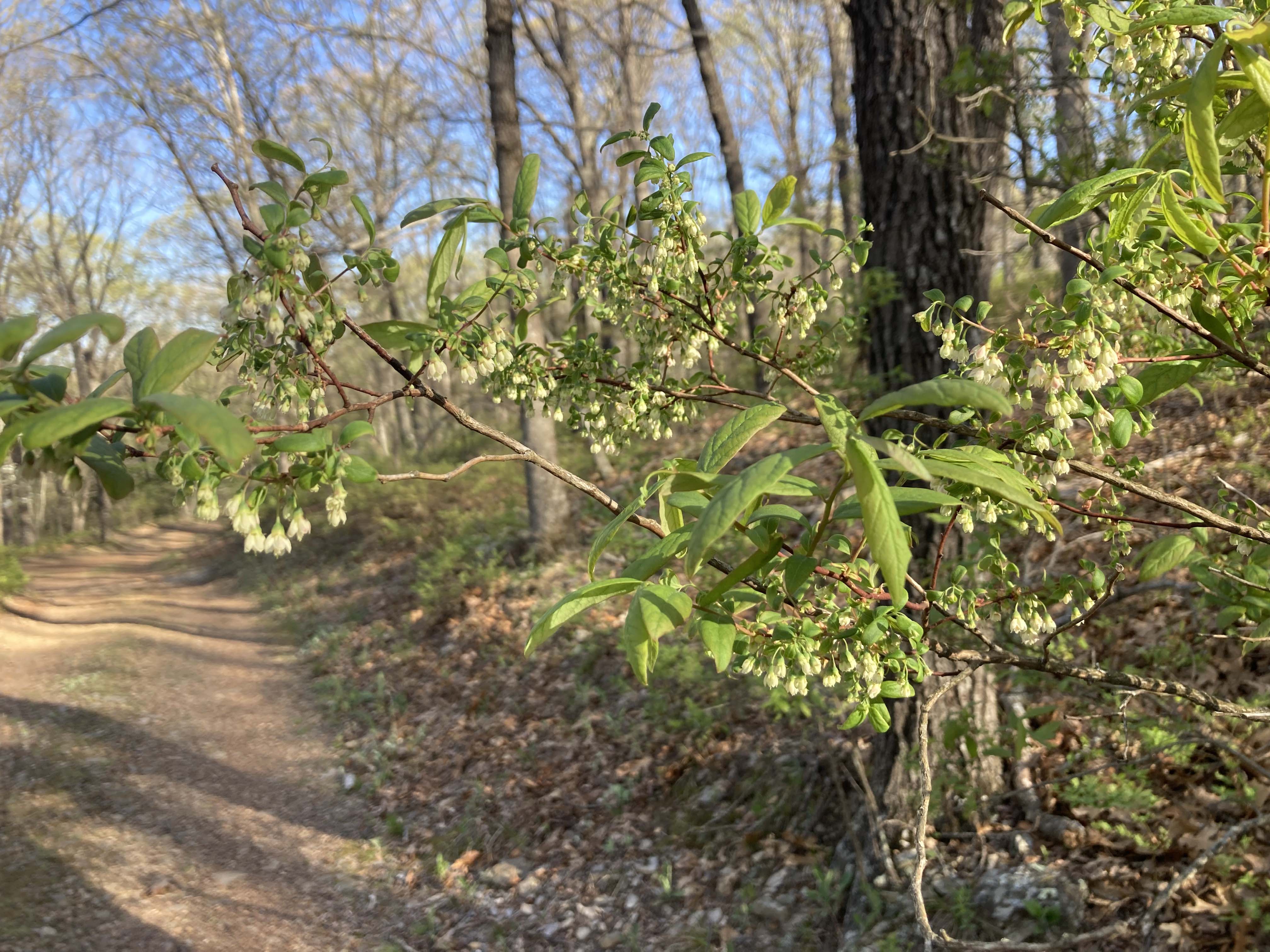Farkleberry and Other Blueberries
Contact
University of Arkansas System Division of Agriculture
Cooperative Extension Service
2301 S. University Ave.
Little Rock, AR 72204

Farkleberry and Other Blueberries
Blueberries are my favorite fruit. So, I have been watching the lowbush blueberries develop that cover large patches of the eastern Madison County hilltop I am getting to know. Along with the delicious lowbush blueberry (Vaccinium pallidum) grow two other species of the blueberry clan, but their fruit are designed for birds, not those of us with a sweet tooth. One of these, the farkleberry (V. arboreum) has a special connection to Madison County.
Like all members of the heath family, these three species only thrive on well-drained acidic soils. Though mostly found as part of the forest understory, they need at least six hours of sunlight to develop a full crop of berries. Blueberries are one of only a few species of exclusively North American fruit that have made it onto tables around the world.
The lowbush blueberry is the most common vaccinium in the state and nation, ranging from east Texas, through much of the eastern states and well into eastern Canada. It forms large, dense stoloniferous colonies that reach about knee high. The trusses of small white, barrel-shaped flowers appear in mid-spring and are followed by small, pea-sized blueberries about two months later. Scouting the colonies, I see only a few plants that are in full bloom, so it may be a race to beat the birds to the ripe fruit.
The wild lowbush blueberries sold frozen or added to baked goods are produced by V. angustifolium, a species that occurs in the northeastern states and adjacent parts of Canada. Growers there manage their fields to encourage alternate-year production. Plants flower best on vigorous, one-year-old stems. Native Americans burned the fields but today farmers mostly mow down half of their fields to manage the alternate year bearing cycle. I will be watching the Forest Service burn next spring to see if the lowbush blueberry crop is better in that section.
The highbush blueberry (V. corymbosum), the species that provides most of our summertime supply of blueberries in the stores, is native across much of Arkansas and eastern states but doesn’t occur on this particular hilltop. The efforts at large-scale commercial production a couple of decades ago never really caught on in the state. The southern highbush blueberry (V. darrowii) of the deep southern gulf coast, and a number of its no-chill clones, are grown in Peru and are the source of our wintertime supply of blueberries.
The two mealy, black-fruited vacciniums found here on the mountaintop are deerberry and farkleberry. Deerberry has attractive white, bell-shaped flowers with protruding stamens and grows on head-high shrubs. The black berries appear in August and the birds seem to like them.
Farkleberry, with the species name Vaccinium arboretum, hints that it is a large plant, sometimes growing to tree-size proportions of over 20 feet tall. In milder areas it may be semievergreen but north of the Arkansas river it loses its leaves. For all of its notoriety in Arkansas, the farkleberry remains a mostly unrecognized shrub to most Arkansans.
Farkleberry’s widespread name recognition – at least amongst those of a certain age and a passing interest in Arkansas politics – is due to Madison County’s colorful governor Orval Faubus who served from 1955 through 1967 during the height of the desegregation battles. One day Faubus donned a pair of bib overalls, grabbed an ax and headed to Franklin County where state highway employees were clearing the brush along the roadway. His mission was to make sure they didn’t cut down any dogwoods or redbuds. Accompanying him was an official from the Parks and Tourism Department tasked with photographing the scene and writing a story about the hands-on governor.
This farcical setup was too much for the Arkansas Democrat’s editorial cartoonist George Fisher to resist, so he took some artistic liberties and inserted “Farkleberry” into the list of trees that should be saved. It stuck and Faubus became Governor Farkleberry. Even after Faubus’s terms ended, the Farkleberry Follies – a long-running political roast intended to deflate the egos of overly pompous politicians – kept the name in front of Arkansans.

